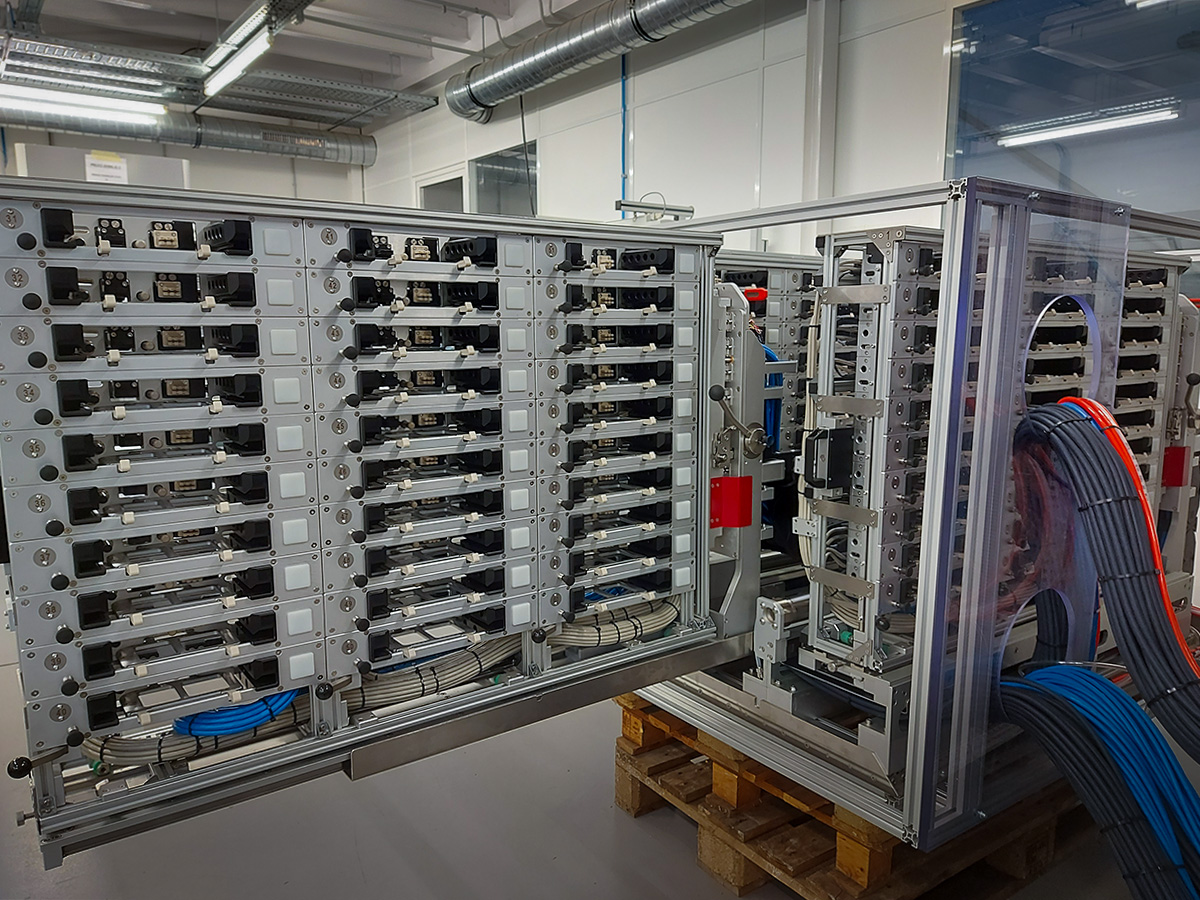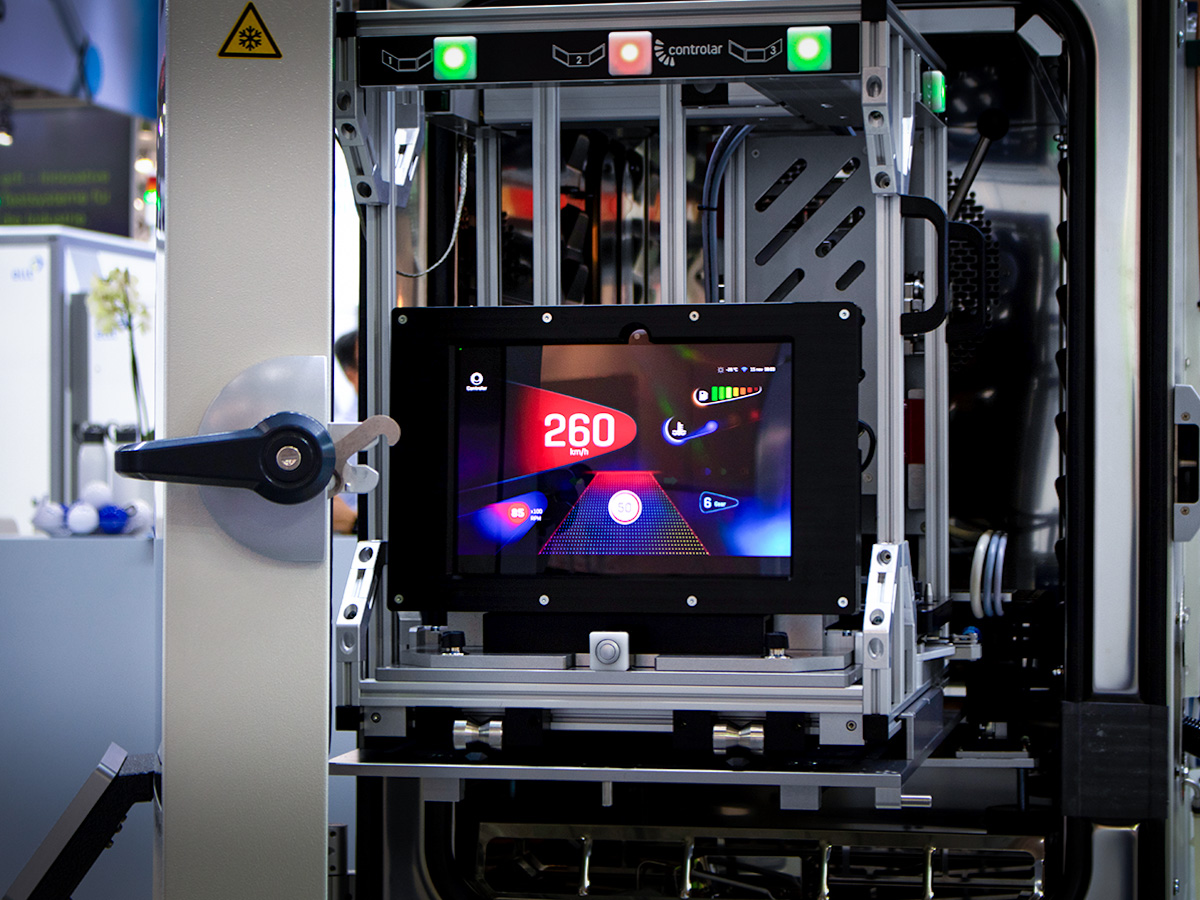Introduction

As products become more complex, the number of test cases required to ensure product quality increases, demanding more comprehensive testing that covers a wide range of scenarios and use cases. This often calls for the development of custom test protocols and software to address the increasing complexity of modern products, which can be expensive and often require the use of highly specialized equipment and expertise to operate and maintain. Consequently, testing automotive electronics in production environments can be a complex, time-consuming and costly process.
Automated testing, including end-of-line (EoL) testing, is an important tool to assure testing efficiency and accuracy in electronics development. Improving automated test methods requires a combination of best practices, including the use of standardized procedures, automation, high-quality equipment, automated data analysis, artificial intelligence, regular maintenance calibration, and continuous process improvement. With these methods, organizations can improve testing efficiency, reduce testing time and costs, and deliver higher-quality products to market.
This article explores best practices in automotive electronics testing, comparing different test methodologies and highlighting innovative solutions like Controlar’s Compact Multicell Test System (CMTS) and Burn-In and Run-In Systems, which leverage parallel and concurrent testing for enhanced performance and sustainability.
Key Takeaways
- Growing Complexity: Modern vehicles integrate advanced electronic components, requiring rigorous and efficient testing to ensure performance and reliability.
- Automated Testing: EoL testing and automation streamline processes, improving accuracy, reducing costs, and enhancing production efficiency.
- RF Testing Considerations: Infotainment systems require specialized RF testing, utilizing both signaling and non-signaling methods to verify connectivity and performance.
- Test Methodologies: Sequential, parallel, and concurrent testing provide different efficiency levels, balancing speed, cost, and complexity in production environments.
- Optimized Solutions: Controlar’s CMTS enables high-throughput parallel and concurrent testing, minimizing equipment redundancy and maximizing production space.
- Reliability Enhancement: Burn-In and Run-In Systems stress-test multiple products simultaneously, identifying potential failures early and ensuring long-term durability.
Automated Testing for Infotainment Systems
Vehicular infotainment systems provide a means of entertainment, and information, transmitted to the vehicle using radio waves.
These systems have evolved from basic AM/FM receivers to advanced platforms capable of processing signals like DAB, DVB-T, satellite radio, Bluetooth, Wi-Fi, LTE, and 5G. Modern systems also integrate data from other Electronic Control Units (ECUs), such as the engine control unit, Advanced Driver-Assistance Systems (ADAS), climate control and other safety and comfort systems.
End-of-Line (EoL) Testing
The testing process involves the interaction of the testing equipment with the electronic product in a simulated environment, replicating the conditions present in a vehicle. This includes interactions with other ECUs and real-world signals such as RF signals and other signals captured by specific sensors. Replicating these conditions requires specialized hardware equipment capable of generating such signals.
RF testing is a very important part of this process, especially for infotainment systems. One of the primary uses of these devices is entertainment, mainly listening to radio stations. Consequently, significant focus is placed on testing the radios within these products. For this testing to occur, the correct signals must be generated for the product to receive and decode. Alongside testing, calibration generally takes place to account for losses and variations in the product itself.
RF testing can be conducted using two primary methods, signaling and non-signaling testing:
This approach establishes a full communication stack, testing both hardware and software. For Bluetooth testing, for instance, pairing is performed and data is transferred between the product and testing hardware capable of implementing the full stack. This method tests and validates the components, assembly of the product, and software stack comprehensively but requires longer test times due to the need to establish a connection and perform detailed test.
This method focuses on validating hardware , assembly and basic software functionality. A set of standard packets are transmitted between the product and testing hardware, which are then analyzed for objective indicators such as Bit Error Rate or frequency deviation. Although faster than signaling testing,this method does not validate the whole software stack, and testing routines must be implemented within the product.
SIngle vs. Multi-Product Testing Systems
There are several types of systems designed for final testing of automotive products. These systems can test a single product at a time or handle multiple products simultaneously:
Equipped with dedicated hardware available exclusively for one product at a time. The utilization of each hardware component depends on the test type and the product being tested.
Share hardware between multiple products or include dedicated hardware for each product, depending on factors like cycle time, hardware costs, and available space.
Testing Methodologies
Testing multiple products simultaneously in an automated test system can be limited by the cost of replicating hardware for each of the products. To address this problem several test methodologies have been implemented, each with its distinct advantages and disadvantages. Sequential, parallel, and concurrent test methods are three different methodologies that can be used to improve automatic testing efficiency and effectiveness.
Involves running tests in a predefined order, one after another. This approach is straightforward and easy to understand, and it ensures that tests are performed in a logical and consistent manner. However, sequential testing can be slow and time-consuming, as each test must be completed before the next one can begin.

In the image it is shown a use case of sequential testing, where there are no tests performed simultaneously, and the total time of test is the sum of each individual test.
Involves running multiple tests simultaneously, often using multiple testing environments or systems. This approach can speed up the testing process and improve efficiency, as multiple tests can be run in parallel. However, parallel testing can be complex to set up and manage, as it requires coordination between multiple testing environments.
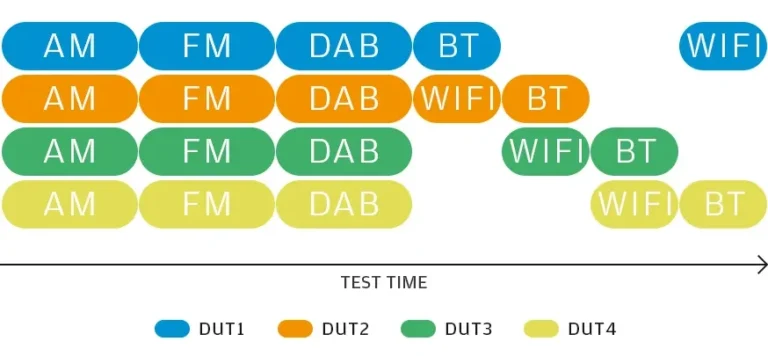
In the image it is shown a use case of parallel testing, where AM, FM and DAB tests of the 4 DUTs are performed at the same time, and Bluetooth and WiFi are performed sequentially, because they cannot be parallelized.
Involves running multiple tests simultaneously on the same system or environment. This approach can be faster and more efficient than parallel testing, as multiple tests can be run in parallel without the need for multiple testing environments. However, concurrent testing can be complex and challenging to set up, as it requires careful coordination of test cases to avoid conflicts and ensure that tests are run correctly.
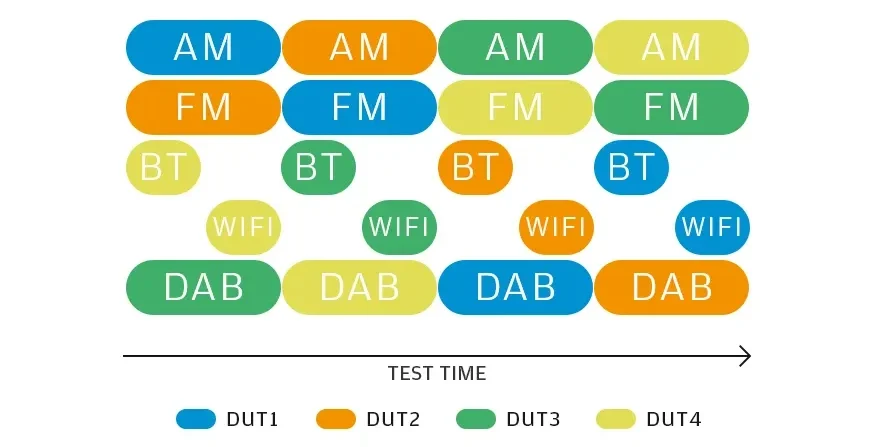
In the image it is shown a use case of concurrent testing, where the management system aligns the tests so that each DUT is always under test, reducing the total amount of test time.
Regardless of the chosen methodology, all test must meet 100% coverage as specified in the test requirements.
Key Considerations
- In summary, sequential testing is a simple and straightforward approach that ensures tests are run in a logical order, but it can be slow and time-consuming. Parallel testing can speed up testing by running multiple tests in parallel, but it can be complex to set up and manage. Concurrent testing can be faster and more efficient than parallel testing, but it requires careful coordination to ensure that tests are run correctly, and conflicts are avoided.
- It is important to note that implementing parallel and concurrent testing methodologies demands careful planning and consideration of the testing requirements and resources. For example, while parallel testing may require additional test equipment and resources, concurrent testing may require specialized testing techniques and procedures. Additionally, the use of parallel and concurrent testing may increase the risk of test conflicts or interference, which must be carefully managed to ensure accurate and reliable test results.
- Ultimately, selecting the appropriate testing method depends on the specific requirements, available resources, and tools. Proper planning ensures optimal test efficiency while maintaining reliability and accuracy in results.
Controlar's Solutions for Parallel and Concurrent Testing
Controlar has developed innovative solutions that empower manufacturers to optimize their testing processes using parallel and concurrent methodologies. These systems enhance efficiency while promoting sustainability by reducing energy consumption, minimizing equipment redundancy, and maximizing production floor space.
This section highlights two of Controlar’s flagship systems—the Compact Multicell Test System (CMTS) and the Burn-In and Run-In Compact Systems — demonstrating how these advanced testing solutions enable higher throughput while maintaining rigorous quality standards.
Compact Multicell Test System (CMTS)
The Compact Multicell Test System (CMTS) demonstrates how parallel and concurrent testing can transform automotive electronics validation. Engineered for efficiency and sustainability, CMTS features a multi-level architecture that enables up to 24 products to be tested simultaneously within a single system. This reduces the need for multiple test stations, increasing production throughput while minimizing space and resource requirements.
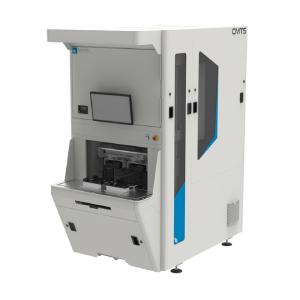
- Optimized Testing Speed and Capacity
- Space-Saving and Maintenance Efficiency
- Sustainable and Cost-Effective Operation
- Scalable for Various Production Needs
By integrating parallel and concurrent testing, CMTS significantly enhances testing speed and capacity. Each independent test cell allows multiple products or different test sequences to run simultaneously without interference. This reduces overall cycle times while ensuring comprehensive test coverage that meets stringent quality and performance standards.
The compact vertical design maximizes floor space utilization, freeing up room for other critical operations. By consolidating 24 individual machines into one, CMTS reduces equipment redundancy, lowers maintenance demands, and minimizes downtime — boosting overall productivity.
CMTS addresses sustainability concerns by cutting energy consumption, material use, and carbon footprint associated with traditional test setups. Fewer machines mean lower maintenance requirements, leading to a more streamlined and cost-effective testing process.
Designed for flexibility, CMTS supports both high-mix, low-volume production and high-volume manufacturing. Its scalable architecture allows manufacturers to adapt to different testing demands while maintaining the high precision and reliability required for automotive electronics.
By combining parallel and concurrent testing methodologies, CMTS delivers superior efficiency, sustainability, and adaptability, making it a key solution for manufacturers striving to stay competitive while adhering to modern environmental and operational standards.
Compact Burn-In and Run-In Test Systems
Controlar’s Burn-In and Run-In Compact Systems leverage parallel testing methodologies to optimize the validation of automotive electronics under extreme conditions. By testing multiple units simultaneously, these systems enhance efficiency, reliability, and cost-effectiveness in the production process.
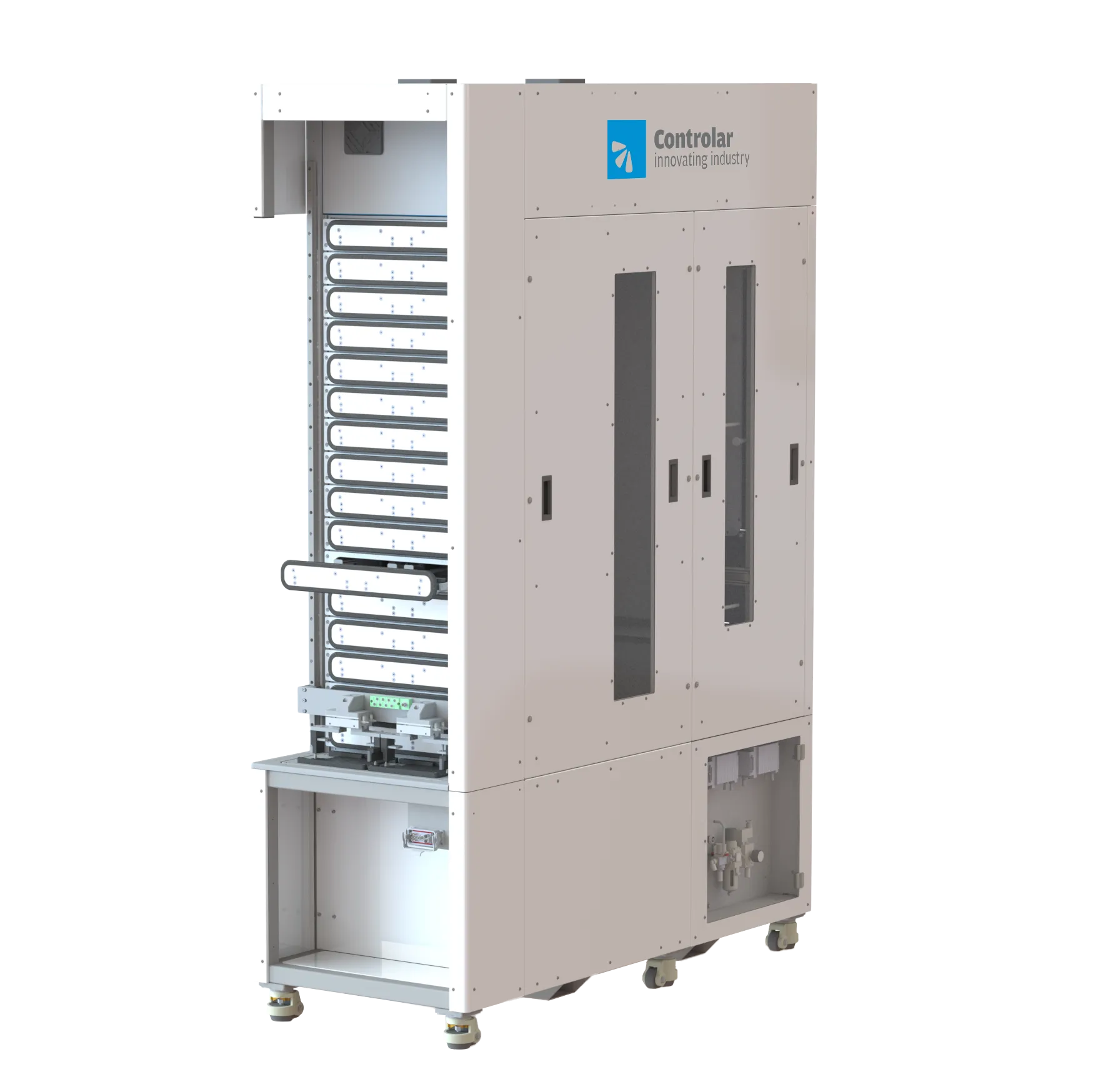
- Enhanced Throughput with Parallel Testing
- Early Failure Detection and Process Optimization
- Designed for High-Volume Production
- Sustainable and Cost-Efficient Operation
By subjecting multiple products to thermal, electrical, and environmental stress simulations within a shared testing environment, these systems maximize equipment utilization. This approach reduces testing time and costs compared to traditional individual unit testing while ensuring all components meet rigorous quality standards.
Parallel testing enables thorough validation by identifying potential failures early in production. This ensures that only fully reliable components reach the market while streamlining the testing workflow — allowing multiple units to be tested simultaneously without compromising accuracy or coverage.
In high-throughput manufacturing environments, minimizing cycle times is essential. Burn-In and Run-In Systems significantly cut validation time while maintaining precision, making them an ideal solution for large-scale production without sacrificing test quality.
By reducing energy consumption, equipment redundancy, and testing inefficiencies, these systems support sustainable manufacturing goals. The optimized design helps manufacturers lower operational costs and environmental impact, aligning with modern industry demands.
Controlar’s Burn-In and Run-In Compact Systems provide an efficient, scalable, and sustainable approach to testing, ensuring high-performance automotive electronics while optimizing production workflows.
Conclusion
The optimization of automotive electronics testing is crucial to meet the increasing complexity of modern vehicle systems. By adopting automated testing methods, including end-of-line testing, and utilizing parallel and concurrent testing methodologies, manufacturers can significantly enhance testing efficiency and reduce costs.
Controlar’s solutions, such as the Compact Multicell Test System (CMTS) and Burn-In and Run-In Compact Systems, exemplify how these advanced methodologies improve throughput, ensure product reliability, and support sustainability. Ultimately, the careful selection and implementation of efficient testing strategies enable manufacturers to deliver high-quality products while meeting operational and environmental goals.
